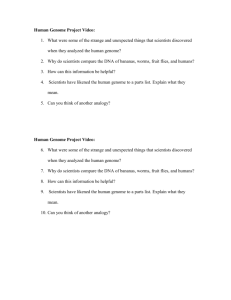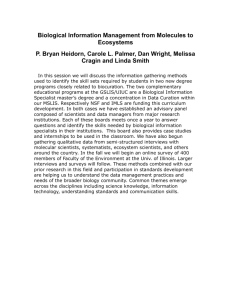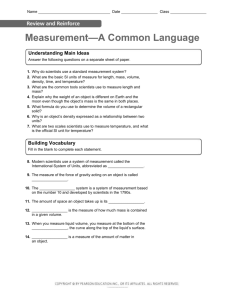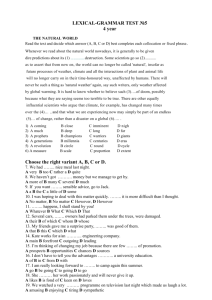HS Lesson 6: Genome`s Greatest Hits
advertisement
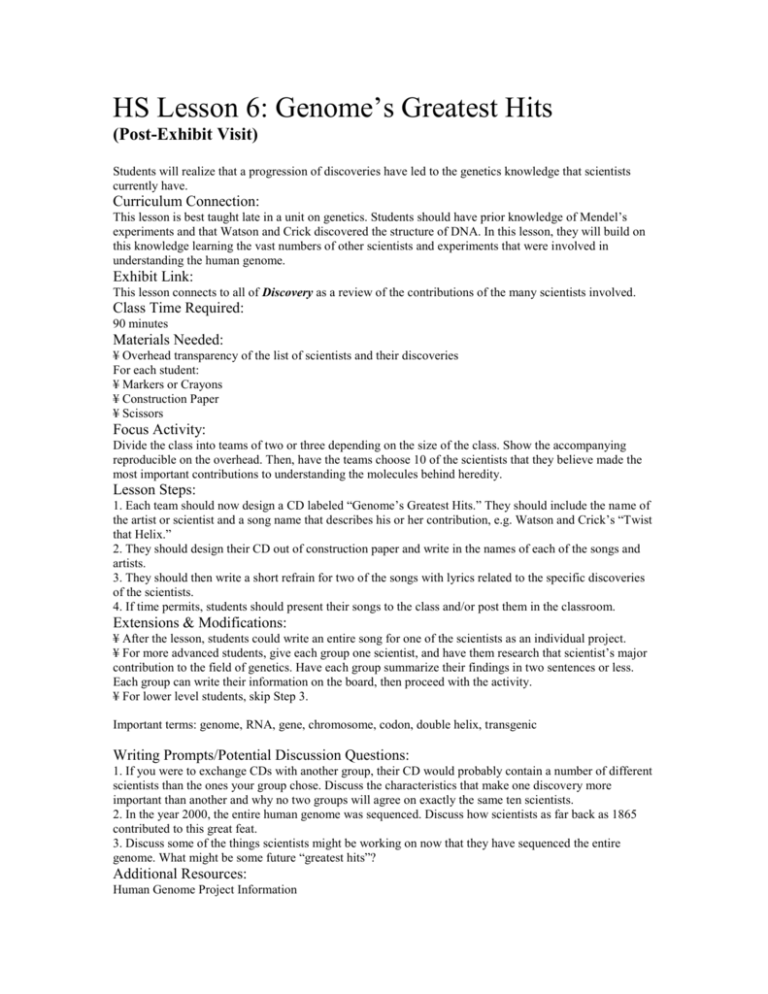
HS Lesson 6: Genome’s Greatest Hits (Post-Exhibit Visit) Objective: Students will realize that a progression of discoveries have led to the genetics knowledge that scientists currently have. Curriculum Connection: This lesson is best taught late in a unit on genetics. Students should have prior knowledge of Mendel’s experiments and that Watson and Crick discovered the structure of DNA. In this lesson, they will build on this knowledge learning the vast numbers of other scientists and experiments that were involved in understanding the human genome. Exhibit Link: This lesson connects to all of Discovery as a review of the contributions of the many scientists involved. Class Time Required: 90 minutes Materials Needed: ¥ Overhead transparency of the list of scientists and their discoveries For each student: ¥ Markers or Crayons ¥ Construction Paper ¥ Scissors Focus Activity: Divide the class into teams of two or three depending on the size of the class. Show the accompanying reproducible on the overhead. Then, have the teams choose 10 of the scientists that they believe made the most important contributions to understanding the molecules behind heredity. Lesson Steps: 1. Each team should now design a CD labeled “Genome’s Greatest Hits.” They should include the name of the artist or scientist and a song name that describes his or her contribution, e.g. Watson and Crick’s “Twist that Helix.” 2. They should design their CD out of construction paper and write in the names of each of the songs and artists. 3. They should then write a short refrain for two of the songs with lyrics related to the specific discoveries of the scientists. 4. If time permits, students should present their songs to the class and/or post them in the classroom. Extensions & Modifications: ¥ After the lesson, students could write an entire song for one of the scientists as an individual project. ¥ For more advanced students, give each group one scientist, and have them research that scientist’s major contribution to the field of genetics. Have each group summarize their findings in two sentences or less. Each group can write their information on the board, then proceed with the activity. ¥ For lower level students, skip Step 3. Important terms: genome, RNA, gene, chromosome, codon, double helix, transgenic Writing Prompts/Potential Discussion Questions: 1. If you were to exchange CDs with another group, their CD would probably contain a number of different scientists than the ones your group chose. Discuss the characteristics that make one discovery more important than another and why no two groups will agree on exactly the same ten scientists. 2. In the year 2000, the entire human genome was sequenced. Discuss how scientists as far back as 1865 contributed to this great feat. 3. Discuss some of the things scientists might be working on now that they have sequenced the entire genome. What might be some future “greatest hits”? Additional Resources: Human Genome Project Information http://www.ornl.gov/hgmis/ Basic information sponsored by the U.S. Department of Energy. National Standards Addressed: Standard G — Science as a Human Endeavor ¥ Individuals and teams have contributed and will continue to contribute to the scientific enterprise. Standard G — Historical Perspectives ¥ In history, diverse cultures have contributed scientific knowledge and technologic inventions. ¥ The daily work of science and engineering results in incremental advances in our understanding of the world and our ability to meet human needs and aspirations. Much can be learned about the internal workings of science and the nature of science from study of individual scientists, their daily work, and their efforts to advance scientific knowledge in their area of study.
